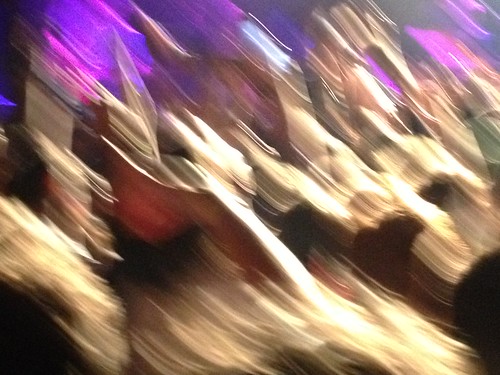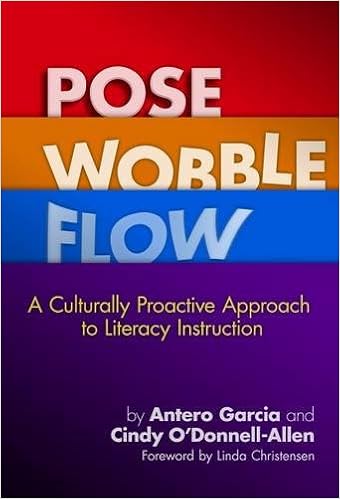
As instructors are pulling together syllabi for the upcoming school year, I wanted to share another excerpt from my recent book Critical Foundations in Young Adult Literature: Challenging Genres. Like the excerpt shared earlier looking at depictions of female sexuality in Divergent and the Daughter of Smoke and Bone, this excerpt challenges assumptions developed over time in YA literature. I hope to post a few more excerpts in the coming months.
Who Gets to Be Gay in YA?
As the slow trickle of LGBTQI* books continues today, the titles most widely available help categorize what YA queer fiction looks like. That is, with so few books available, the ones that do get published create a patchwork picture of who is privileged as represented in queer YA fiction. With several significant exceptions (Alex Sanchez’s [2003] Rainbow Boys comes to mind), LGBTQI characters are often white and socioeconomically privileged. They may not be wealthy but Tiny in Will Grayson, Will Grayson or Holland Jaeger in Keeping You a Secret are anything but financially burdened in their stories.
And so, while I applaud the slowly diversifying representations of sexuality emerging in YA, I would argue that these books also identify who gets to be gay in YA. Likely based on increasing a wide readership, these books are about white and middle or upper-class individuals (reflecting the book buying audience).
In looking at the problematic representation of LGBTQI characters, I am intrigued by the trajectory of David Levithan’s novels. Over the many books that Levithan has authored through 2013, every single text includes LGBTQI characters, often they are at the center of the stories. For instance, Levithan’s (2003) first book, Boy Meets Boy is a warming love story about Paul, an openly gay 11th grader. Boy Meets Boy details Paul’s adventures as he falls in love and reconciles past relationships and friendships in a welcoming high school. It is playful, silly, touching, and campy. More than any other aspect of the book, the biggest pushback my college students that read this book in an adolescents’ literature class have is that the book is too unrealistic in its positive depictions of acceptance. The book plays with expectations of what takes place in high schools (the star quarterback at the school is also a popular cross-dressing homecoming queen named Infinite Darlene). The book plays out as fantasy or idealized and over-the-top visions of inclusion in school spaces.
In the decade that he has been publishing books, Levithan’s stories have become more fluid in their depictions of gender and identity. At the same time, the books’ forms tend to challenge how we read and understand novels. Though these can be seen as two separate stylistic decisions on Levithan’s part, I believe the uprooting of gender and sexuality can be tied to an uprooting of YA book structures as well. In the ten years since Boy Meets Boy was first published, a striking shift in Levithan’s novels becomes apparent. One of his next books, The Realm of Possibility (2006), also focused on gay characters. However, the form was strikingly abstract: a series of poems constructs a collage of narratives of love and growth. The book reads like a chorus of echoing voices speaking across and at each other.
In 2011, Levithan published The Lover’s Dictionary. As its name implies, the book’s short entries are organized alphabetically. They detail a cycle of a relationship: from attraction to love to dispute to separation. The narrative is one that the reader must cobble together. When did certain actions happen? Is this relationship concluded? Flourishing? Stewing in some sort of stasis? Arguments could be made in any direction. For some, this may make this an unfulfilling narrative. There lacks the kind of definitive plot and resolution that readers expect. However, on the other hand, this is also a book that offers powerful, liberating possibilities for readers. There is no set way to read the book. Want to read an entry from the letter R first? Go for it. The story is fluid in ways that makes relationships seem like extendedpossibilities and hiccups. There’s also something else significantly apparent the longer you spend time with The Lover’s Dictionary: there is no set gender in the book’s descriptions and entries.
A heteronormative view of the book could easily assume this is a detailed account of a romance between a male and a female. Readers more familiar with Levithan’s repertoire could likely infer that this is a book detailing a homosexual relationship. However, I do not see the structure of the book as one that was developed in an effort to please various readers. Instead, the book looks like an effort to blur our understanding of gender. The way conceptions of being male and female are created and defined by contemporary society can feel out of step for questioning young and not-so-young people alike. If the ways I enact my gender as a thirty-something male do not fall in-line with how society casts male gender and masculinity, my behaviors and actions are in discord with general social rules. The Lover’s Dictionary, then, is a challenge to these expectations. The universality of the feelings, experiences and emotions within the book establish that it doesn’t matter if a protagonist is male or female. Levithan’s book succeeds because of the structural conceit of veiling the text in a swath of second person pronouns: “you” and “your” replace the gendered labels “he” or “she” and “his” or “hers.” Levithan is able to create an engaging and critically lauded novel with few clues about gender.
The conceit of writing a book where gender is largely absent would seem like a singular experiment. However, Levithan followed up The Lovers Dictionary with a similar attempt: Every Day (2012). The fantastical premise of this novel is something like this: each morning the protagonist of the novel wakes up as someone new. This isn’t just anyone; the age of the person is consistent with the age of the protagonist. However, name, location, gender, and sense of identity are all that of a new person. In essence everyday the main character becomes someone new (while still preserving past memories). The protagonist refers to itself as “A.” Throughout the book, A embodies men, women, straight and queer identities. However, after a central turning point the protagonist finds an innate connection with a female character. And so begins a central question that is at work across Levithan’s books: how do we communicate and fall in love with those around us, regardless of gender and sexuality? These are not simply defining categories in which we are placed in Levithan’s texts, but fluid states we move between. Every Day follows A’s elusive search for this female character. Is this a romantic relationship? A spiritual one? As a female being sought, does this implicate that A’s true nature is a heterosexual one? That is, deep down inside, is A gendered as male? Conversely, is this an LGBTQI text that engenders A with female qualities? Levithan reaches beyond traditional expectations of gender and looks for human-to-human, individual connections.
With the above excerpt following a more sweeping account of LGBTQI representation in YA lit, the emphasis on Levithan looks at the stylistic moves and trajectory of one of the sub-genres most visible authors. Thanks for taking a look. Again, if you’re interested in class visits, guest lectures, or only-somewhat-rambling conversation (digitally or otherwise), please get in touch!
* I note and critique earlier in the chapter that I use the label of Lesbian, Gay, Bisexual, Transgender, Questioning, and Intersex, as this was the same terminology I would use in my high school classroom.
Tell people this is awesome:





